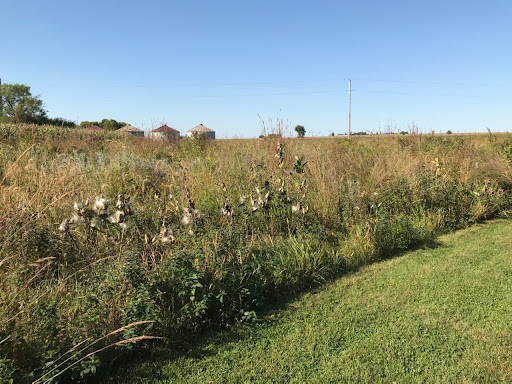
![]() Farmers for Monarchs has detailed several resources for farmers and landowners looking to establish and maintain monarch and pollinator habitat on their lands—we’ve recently highlighted a new step-by-step guide to help producers plant for pollinators. But what about those landowners who have already established pollinator habitat? How should they evaluate and maintain habitat success? Ongoing habitat evaluation and maintenance is critical to ensuring the land continues to provide benefits to the land manager and meets environmental resource concerns, like supporting monarch butterflies.
Farmers for Monarchs has detailed several resources for farmers and landowners looking to establish and maintain monarch and pollinator habitat on their lands—we’ve recently highlighted a new step-by-step guide to help producers plant for pollinators. But what about those landowners who have already established pollinator habitat? How should they evaluate and maintain habitat success? Ongoing habitat evaluation and maintenance is critical to ensuring the land continues to provide benefits to the land manager and meets environmental resource concerns, like supporting monarch butterflies.
Before discussing how to maintain habitat, we want to underscore just how incredibly valuable new pollinator habitat is for monarchs and other pollinators. A study published in Biodiversity and Conservation in October 2020 titled “Landscape characterization of floral resources for pollinators in the Prairie Pothole Region of the United States,” considered the forage value for pollinators of three major classes of grasslands in the Prairie Pothole Region. The classes of grasslands were:
- Engineered pollinator habitat: specifically those seeded to provide pollinator habitat;
- Conservation grassland: those that provide conservation cover not specific to pollinators; and
- General grassland: those that support a range of other uses
The study found that engineered pollinator habitat had the highest flower abundance but also the smallest spatial footprint, contributing just 0.1% of the estimated flower abundance. In this context, “engineered” means prepping the site and starting with the correct seed mixtures for the site. Bottom line: engineered pollinator habitats, like the ones established by farmers and landowners, provide the highest value for pollinators but these high impact acres can be just a single or few plots and placed where it makes sense for your operation. Fortunately, we can take steps to improve our conservation grasslands, general grasslands, and other areas to provide more plant biodiversity, and thereby higher pollinator value.
Understanding the high value of engineered pollinator habitat reinforces the need to not only establish, but also properly evaluate and maintain it. The Natural Resources Conservation Service (NRCS) outlines several decisions and approaches to proper management during the mid-contract management period for land enrolled in the Conservation Reserve Program (CRP). Any land manager maintaining habitat can follow NRCS’ best management practices, whether or not their land is enrolled in CRP or related programs.
According to NRCS, managing the entire pollinator patch at once can severely impact wildlife inhabiting the site and leave them with limited opportunities to seek refuge and recolonize. That is why the agency recommends that farmers manage no more than one-third of the pollinator habitat at a time. An ongoing site conservation plan can help to establish a management rotation and schedule so that each parcel of land is managed about every three years.
The NRCS Field Field Office Technical Guide provides a Wildlife Habitat Evaluation Guide that helps landowners assess their planned habitat. The assessment should be performed at least twice, once before habitat is established and then once after. The guide helps the landowner assign value to different evaluation categories like residual cover height, herbaceous vegetation management, and vegetative composition, among other categories, to get an overall habitat value.
Mechanical Management
Mechanical management, such as mowing and light disking, should occur in the fall (October to early November) when flowers have died back or are dormant. Light disking or harrowing (2-4” deep) of existing heavy grass stands can increase the amount of open ground and encourage pollinator nesting areas and a diverse plant community of annuals and perennials, according to NRCS. Stands that are planted to appropriate pollinator mixes will not require mowing or light disking often, if at all. Please add reference to Bee and Butterfly Habitat Fund’s Pollinator Habitat Establishment Guide.
When it comes to mowing, we encourage farmers and landowners to follow the guidelines we’ve previously outlined on Farmers for Monarchs.
Prescribed Burning
Prescribed burning is used to remove vegetation, cycle nutrients, and control invasives. Low intensity prescribed burns can also allow germination of seed-bearing annuals, increase plant species diversity, control unwanted woody vegetation, and open up the stand for pollinator nesting sites. Prescribed burns during the fall and early spring tend to favor pollinator habitat.
Interseeding
If you implement a prescribed burn, take full advantage of it. The period following a prescribed burn is a perfect time to interseed. Our friends at Pheasants Forever explain that there are two general interseed mix types to consider. The first type is similar to the mix that was initially planted to bolster seed counts and species. The second type deliberately “book ends” the bloom periods, including early blooming species and very late blooming species, which will extend and bolster the value of your pollinator habitat.
Make sure to visit the Farmers for Monarchs state resources page for information on commercial seed providers and resources.
Weed and Dominant Grass Control
When it comes to eliminating unwanted plants on farms and in our backyard, there is no single approach. We encourage you to review a previous post we published on the best approaches to using herbicides. If you need to control dominant grasses overtaking your habitat, check out the video below on using Clethodim spraying to reduce grasses.
Are we giving you the information you need? We want to hear from you! Please answer this three-question survey to help us ensure we’re providing you the tools and resources you need to support monarch and pollinator habitat.
